
Travel, vacations, staycations … it’s always exciting to get out of the house. But there’s something special about camping. Stepping away from the comforts of modern life has a way of realigning our souls with our place in nature.
Away from the city lights, vast vistas of stars vault to the heavens. Car horns and the incessant background noise of development, are replaced by chirping birds and crickets. With no cell service, you may finally have a chance to slow down, breathe, and check in with your deepest thoughts. Disconnect to reconnect with the things that really matter.
If you have never tried camping, it’s time! Even the biggest cities are less than a day’s drive from fantastic campsites which are perfect for your first camping trip. And if none of your friends are experienced campers, don’t worry—I’m here to help, and there’s no time like the present.
Let’s dig into it—Camping 101, a complete step-by-step guide for camping newbies!
Two Main Types of Camping
When planning a camping trip, it is a good idea to know what you are getting yourself into. While all camping can be fun and rejuvenating, not all camping is the same. To make sure that you are properly prepared for your first time camping, it’s important to distinguish between car camping and backpacking or backcountry camping.
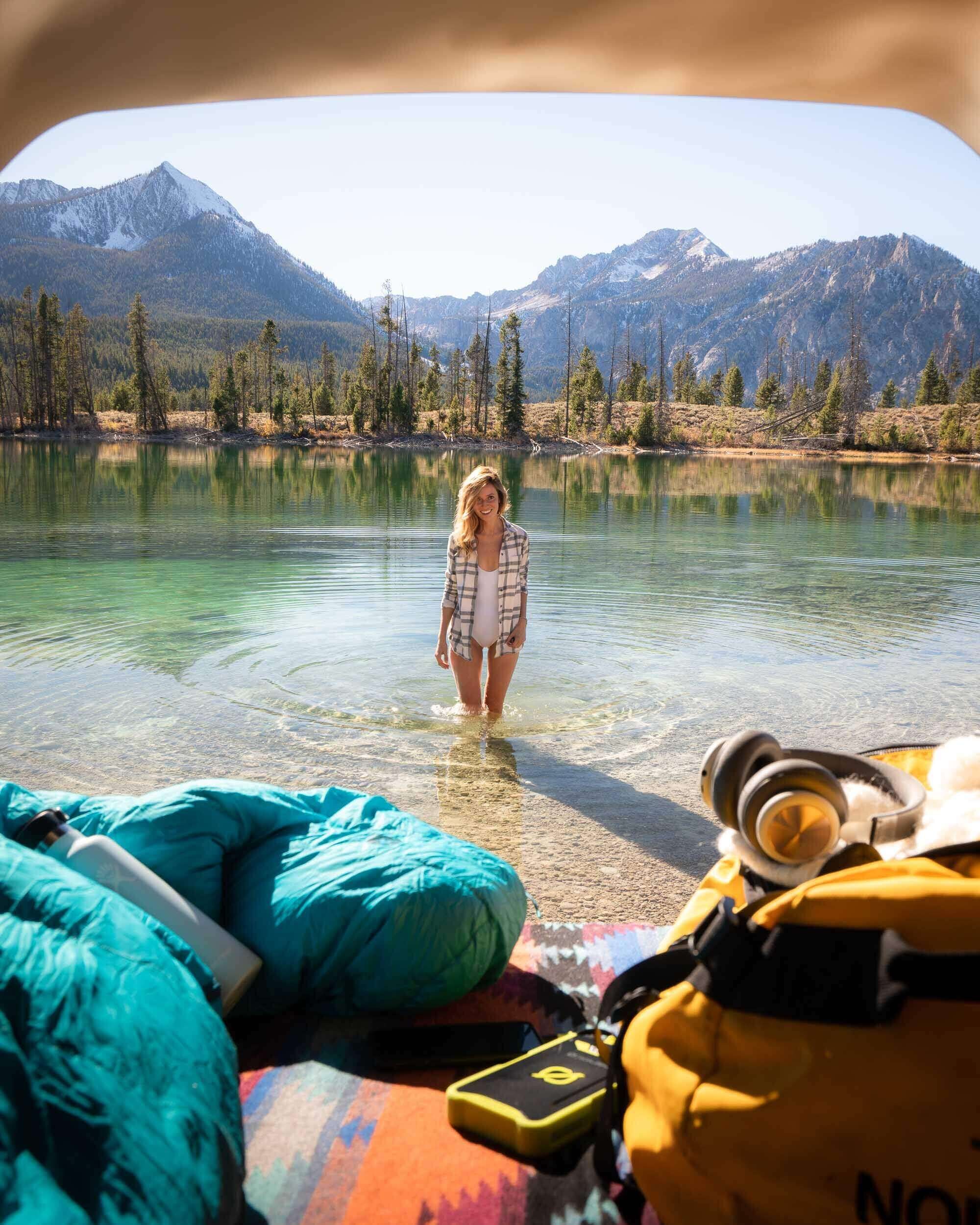
Cooling off before setting up camp in Idaho. In photo: The North Face Base Camp Duffel, Goal Zero Recharger, Hydro Flask Water Bottle.
Car Camping
Some campsites are accessible by car. You can drive right up to them, pitch your tent, and that’s it—you’re ready to go! Drive-up campsites often have more amenities, like lavatories, BBQ grills, fire pits, picnic tables, trash cans, canoe docks, running potable water from pumps or wells, possibly even shower facilities. The permits and fees are often a little steeper, although far from prohibitive.
Car camping is a great way to get your feet wet and build up experience camping in the great outdoors – perfect for a beginner camper. Having your car nearby can eliminate a lot of the anxiety that you might have about camping. It’s something familiar, it allows you to bring more comforts from home, and worse comes to worse, you can easily pack up and leave.
Because you don’t have to carry your gear for miles while car camping, it also tends to be logistically easier than backcountry camping. Just load up whatever fits in your car—spacious tents, ice chests full of food and beverages, folding camp chairs, board games, fishing polls, you name it—and head down a forest road in search of a promising campsite!
Yes, it’s a little easier in terms of logistics, but that doesn’t mean there is no adventure to be had. Car campsites are usually situated near trailheads which lead to stunning views and wildlife encounters within hiking distance. Plus, any time you leave the comforts of your home you’re bound to learn something new!
Pro Tip: Don’t feed wild animals. The more bold they get, the more likely they will try to interact with humans. Even cute wild animals are unpredictable and encounters with them can lead to injury for both the animal and the human.
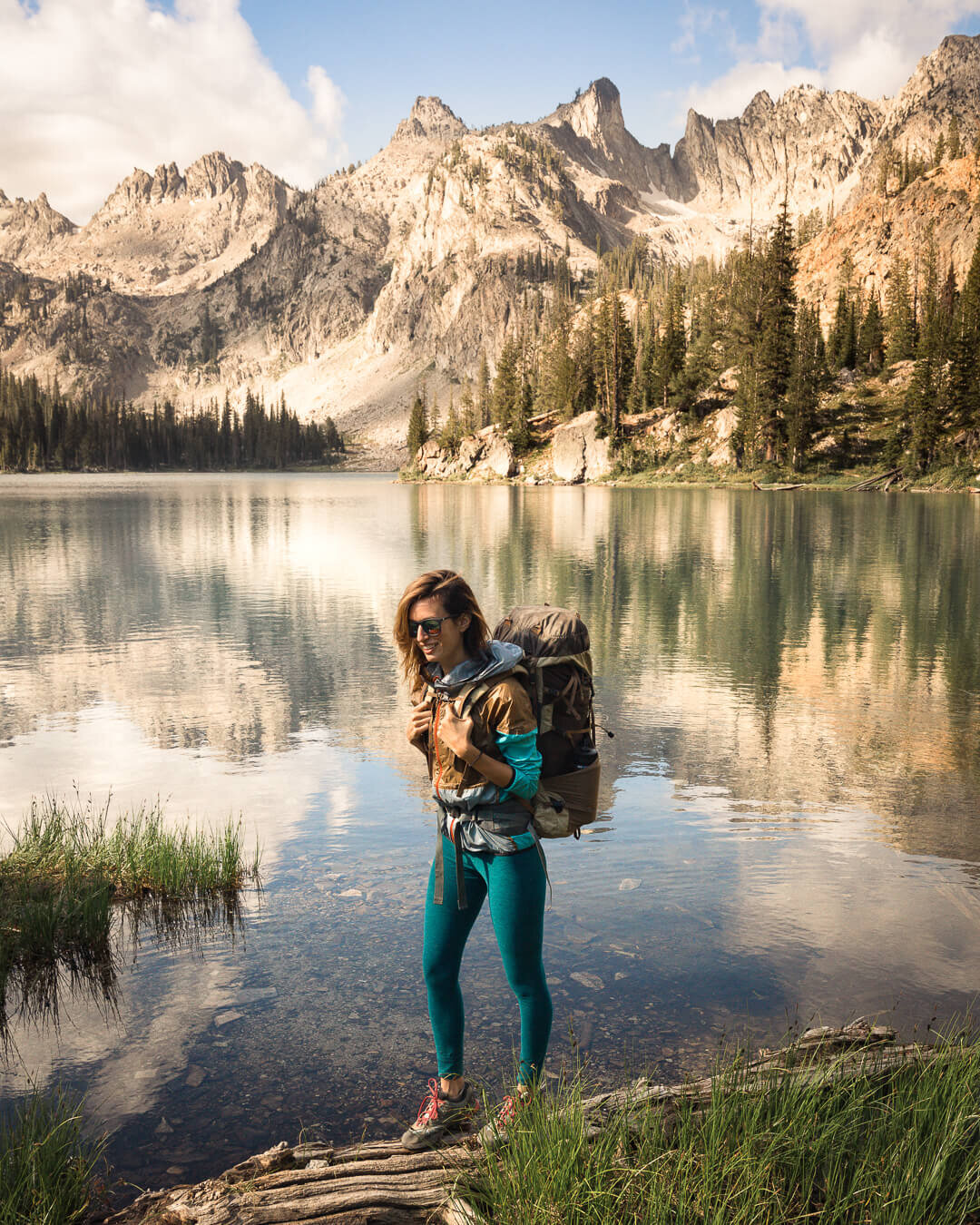
Backpacking in the Sawtooth Mountains. Wearing: Beyond Yoga Leggings, Cotopaxi Jacket, Merrell Hiking Shoe, Granite Gear Backpack.
Backcountry Camping
Backcountry camping is sometimes referred to as “backpacking” because of its signature tool—a backpack that you carry all of your gear in to your desired camping spot. this type of camping requires that you carry everything you need to survive in a backpack.
Because every supply must be carried, tents and camping stove and other supplies must be lightweight and economical in space. Food can’t be perishable or rot in the sun—forget about the extra weight of an ice chest.
Some popular backpacking areas have ranger service, but make no mistake—you are on your own, much more so than at a car campsite. Injuries on the trail could require a helicopter evacuation, and time is of the essence.
Pro Tip: Check out these resources, for a complete list of my favorite Backcountry Camping Gear as well The 10 Essentials that you should always carry with you into the backcountry.
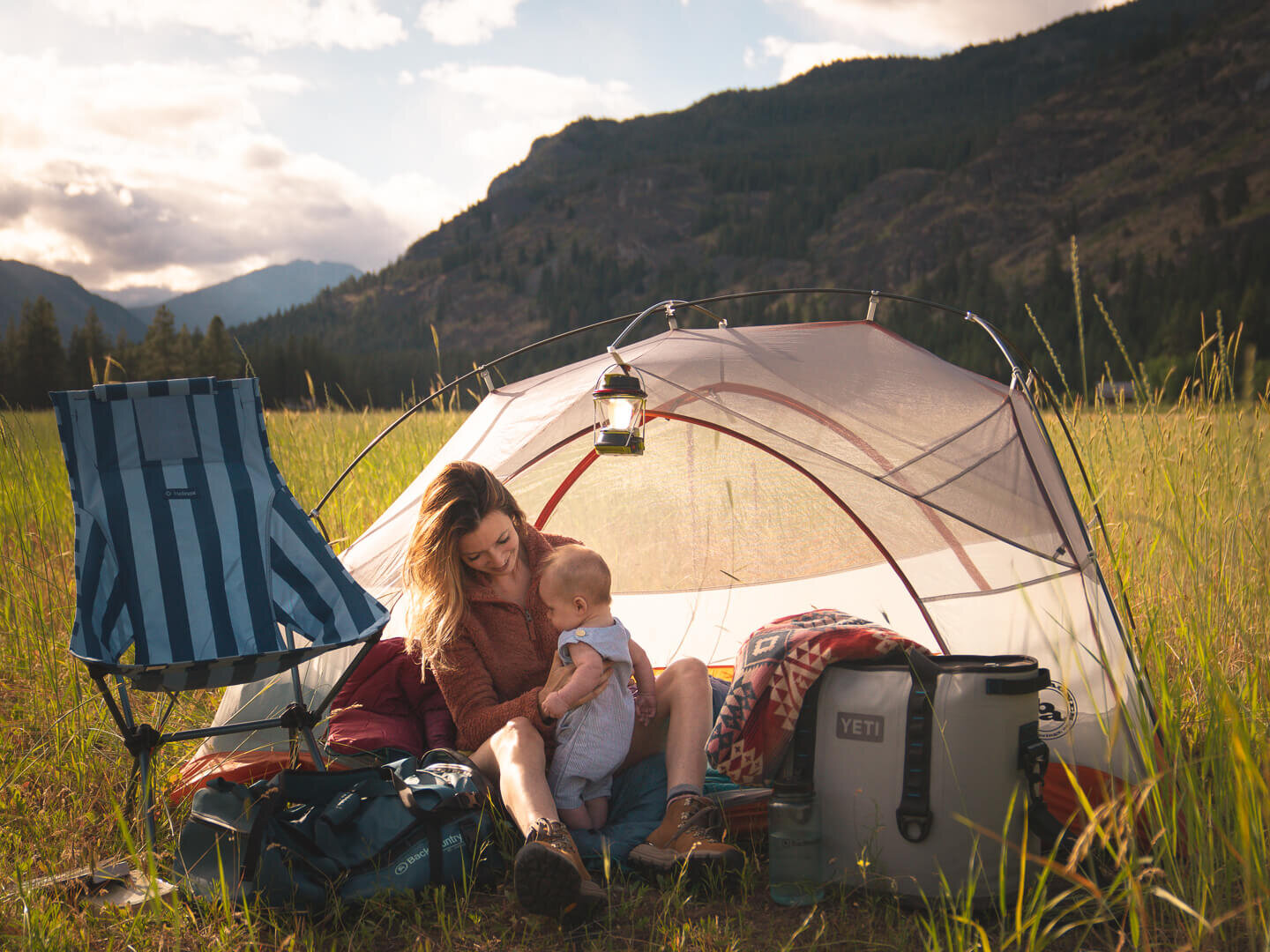
Camping in the yard. Wearing: Patagonia Fleece Jacket and Danner Hiking Boots. Also Shown In Photo: Yeti Cooler, Pendleton Towel, Goal Zero Lantern, Rumpl Blanket, Helinox Sunset Camp Chair.
This guide will focus on car camping. Car camping is a great way to build up your camping confidence before jumping into the deep end. Backcountry camping on the other hand, is much less forgiving to human error. It requires camping experience, physical fitness, and familiarity with your gear.
Safety first. Backpacking will come in good time. For now, there’s plenty of fun to be had car camping and preparing your first time camping checklist!
How to Find a Campsite
In the internet age, it’s easier than ever to find an epic campsite. You can find campsites near you by searching Google, or campsite-specific reserveamerica.com (US-specific websites—check for local directories if you’re in a different country). It can also be helpful to call the ranger station for the area that you are planning on going to and asking them. It’s likely that no one knows the area better than the people who work there!
Some states and countries have lax camping laws—you can pitch a tent and fire up your stove in whatever clearing you find off the road. Others have strict laws about acceptable campgrounds. The websites you find may have park-service or ranger-service phone numbers and email addresses you can use to find details. The sites may also have lists of amenities and required permits or fees.
You may be able to purchase these permits online in advance, or you may have to pay at the ranger station.

Roasting marshmallows over the camp fire at Second Beach on the Olympic Peninsula in Washington. Wearing: Toad&Co Jumper ,The North Face Long Sleeve Shirt, and Blundstone Lace-Up Boots.
Find The Best Campsites With These Resources:
iOverlander:
One of my favorite apps for vanlife, but it’s also a great resource for car camping! Using the app’s built in GPS you can pull up the area you would like to camp and it will give you a detailed description of each nearby site, with a list of amenities, photos, comments and reviews from other campers. I’ve mentioned this app before for international van camping, but it’s just as useful in the United States!
The Outbound:
A fantastic crowed sourced website and app for outdoor activities. You can use the app to find hikes, scenic views, and camping opportunities. Simply type in your desired destination, or use the GPS function to find nearby options. The app will display detailed descriptions with fantastic photos for the best outdoor adventures in the area.
The Ultimate Campgrounds App:
An awesome user-friendly phone app for finding low-cost or free campsites on the go. Ultimate Campgrounds updates their list of public campsites monthly, and it’s very easy to distinguish between Forest Service, National Parks, and other types of campsites on the app. For each campsite, the app lists amenities, road conditions, price, and more. The only potential downside of Ultimate Campgrounds is that it does not include privately owned campgrounds or RV parks. There is also a small fee to purchase the app.
HipCamp:
A web based platform designed to help people find and book unique outdoor accommodations from tent camping to glamping. From public parks and national parks to private land or traditional campsites, HipCamp has one of the most comprehensive guides to camping across the US. I like to think of it as the Airbnb of camping spots!
Pinterest:
Not just a place to find pretty pictures and recipes. It’s basically a search engine for whatever you want more information on – including camp spots! Pinterest is one of my first go-to resources when I start researching a new destination. A quick search for “best camping” will pull up thousands of pins linking to blogs and articles on the subject.
If you are looking to get off the grid and don’t need the conveniences of a developed camp area, than free Camping on Public Lands is always a great bet! In particular land managed under The Bureau of Land Management (BLM Land) and National Forest Land are good options. Dispersed camping is allowed on most BLM land for up to 14 days, and up to 16 days on Forest Land.

How to Plan For Your Car Camping Trip
Some camping tips for beginners on how to plan for a car camping trip:
- Make a checklist of required gear. More on that later.
- Book in advance. Campsites may have limited capacities, and some popular campsites fill up, especially on holidays like Memorial Day Weekend. Before embarking on a spontaneous car camping trip, check that permits are still available and make a reservation if you can.
- Arrive early. Target at least one, possibly two hours before sunset. You don’t want to try to piece together a tent by lantern light.
- Pay special attention to water. Make sure you know whether there is running water on the campsite, or if you need to bring your own. Remember, humans need about a gallon of water a day when they exert themselves or spend time in the sun. That’s just drinking water, mind you—don’t forget water for cooking and washing.
- Watch out for hazards, like dangling dead branches, flash flood zones, and rock debris.
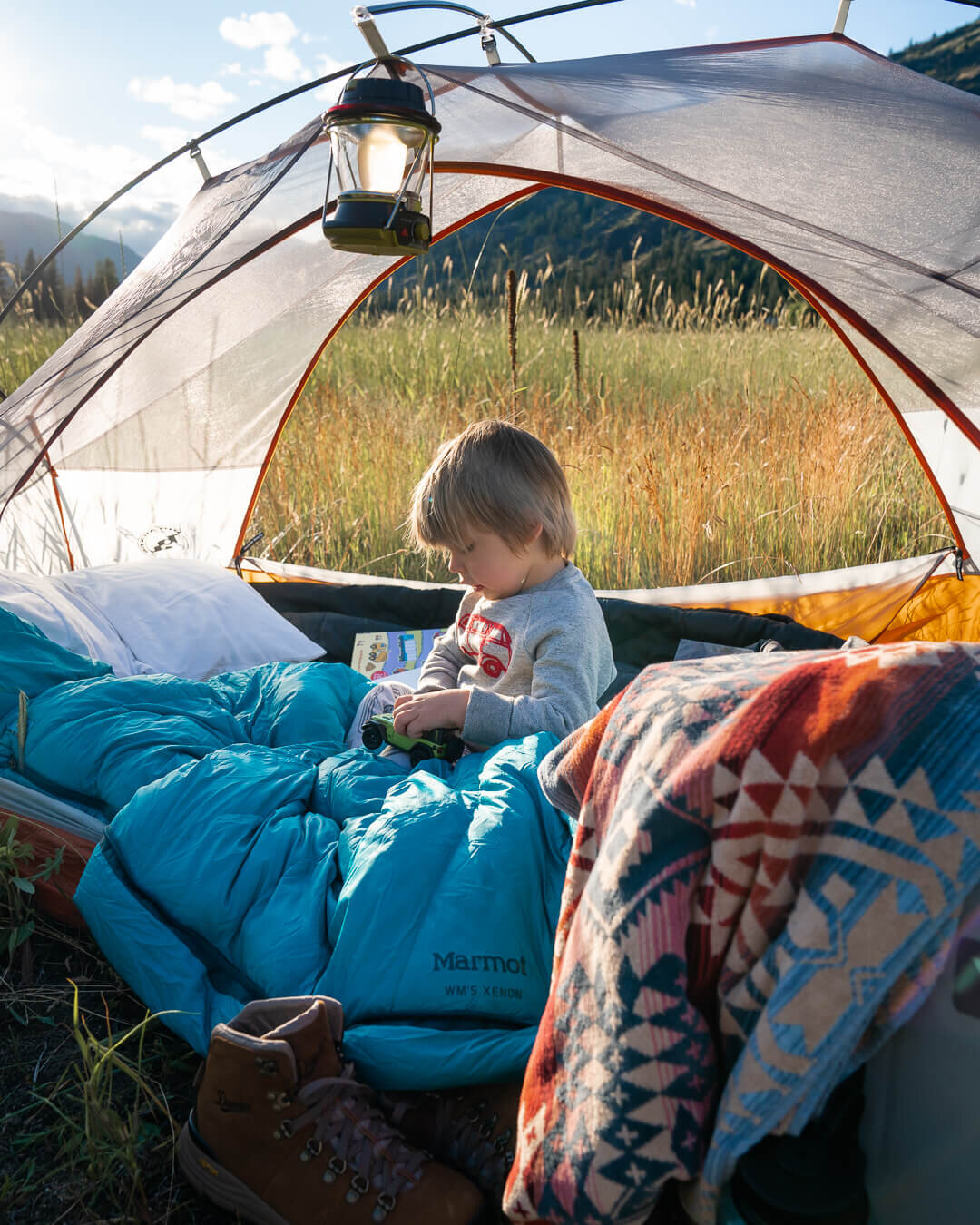
Camping in the yard for the first time! Shown in photo: Danner Hiking Boots, Pendleton Towel, Goal Zero Lantern, Big Agnes Copper Spur Tent.
Essential Car Camping Gear Packing List
One of the best parts about car camping is that you don’t need to limit the weight of the camp gear you bring. Anything you can cram in your car is fair game to bring on the trip, so you don’t have to edit yourself too much.
Still, it’s good to know what the camping essentials for beginners are and make sure you have the right camping gear with you. Not only is there a meditative quality to packing light, but you don’t want to forget any of the essentials. For example, you don’t want to remember the Settlers of Catan game board, only to forget the first aid kit.
Here’s the car camping for beginners checklist of essential gear.
Tent
The right tent is important for camping beginners and seasoned campers!
Tents are usually made of canvas and rated either for three seasons (Spring, Summer, Fall) or four seasons (add winter). Most tents come with a rubberized rain fly that attaches to the tent as a separate piece. If the tent comes with an extra tarp designed to act as a rain fly, don’t forget to put the rain fly on! Rainstorms can surprise you, and without the rain fly you and your gear could be soaked in the middle of the night.
Tents can range from tiny, lightweight one-person backpacking tents, or massive mini-homes with space for a half dozen people or more. Because we’re car camping, we don’t really have to edit the size and weight of the tent we carry. Just make allowances for gear you might need to keep in the tent, elbow or legroom, and privacy for the camping group—some people may not want to share a tent!
Other considerations:
- Fasten the rain fly securely to the ground so it doesn’t blow away.
- Make sure a tent has adequate ventilation, especially in the warm seasons.
- If you want your tent to last, consider aluminum tent poles instead of fiberglass. They’re expensive, but much more durable.
Sleeping Pad
A sleeping pad is important both for comfort while sleeping and keeping you insulated from the ground. The floor of the tent offers very little protection from the bare ground, and tends to leach heat away from your body. This is why they are assigned an “R-value,” like building insulation. Make sure to pick higher R-values for cold-weather camping. For car camping I like to splurge on a comfortable double-wide air mattressfor more room, a good night’s sleep and easier cuddling!
Sleeping Bag
Sleeping bags are rated for temperature. One of the basics for camping is to make sure to pick a sleeping bag that is warmer than you need it to be. You can always unzip, but it’s a lot more difficult to make a sleeping bag warmer than it is.
A sleeping bag’s temperature rating is partially driven by the shape:
Rectangular sleeping bags are roomy—basically a folded-in-half comforter. It can even be unzipped and used as a comforter in a pinch.
Mummy bags fit much more snugly and sometimes cover the head, leaving only the face exposed for breathing, This keeps heat close to your body in cold weather conditions—especially at the head, which accounts for 80% of the heat diffusion of your body.
Barrel bags have qualities of both rectangular and mummy bags—rectangular at the top, mummy at the feet.
Double sleeping bags are great for couples, especially since nothing warms a human body like another human body.
Note: Check out my Ultimate Camping Gear Guide for my favorite sleeping bags. And don’t forget your favorite pillow!
Light
Even more developed campsites tend to eschew electric lights for the benefit of those that want to enjoy the splendor of the night sky far from the light pollution of big cities. Plan to bring any nighttime light you think you might need. Options include:
Flashlights. Heavy-duty battery powered flashlights can make negotiating a campsite at nighttime much easier.
Headlamps are a great option because they light your line of sight and free up your hands for other activities, like sewing or camp cooking.
Lanterns can be powered by batteries or or even solar energy and provide area light for cooking, board and card games, and other campground activities.
Stove
Camp stoves are usually powered by propane gas or liquid fuel and can be as small as a single burner; or camping stoves can be multi-burner cooktops suitable for crafting a gourmet feast.
A charcoal grill might be another cool accessory, perfect for open-flame cooking. The campsite might already have a charcoal grill, meaning you only need to bring the charcoal.
Obviously tiny stoves like the Jetboil Flash Stove are necessary for backpacking, but for car camping, the only limitation is the space in the trunk of your car.
Utensils
You’ll need plates, spoons, forks, knives, and cups, as well as whatever pots, pans, and gadgets are required to turn your menu into the desired meal. It may be tempting to bring paper and plastic utensils to save yourself the trouble of dishwashing, but these consumable products choke up landfills. Instead, invest in reusable cutlery and kitchen wear so that you can protect the places we play while you enjoy them!
Cooler
You would never bring a cooler backpacking, but an ice chest or cooler is perfectly appropriate for car camping. It can help you bring the perishable ingredients you need for a feast. Remember to bring a larger cooler, packed with ice or frozen gel packs if your food supply must last several days.
First Aid Kit
Minor injuries can quickly become debilitating or serious if left untreated. Without easy access to a drug store, you want to have first aid basics on hand. First aid kits typically include bandages, ointments, antiseptics, fever reducers, pain killers, blister treatments, sometimes epi pens and antihistamines.
Don’t try to build a first aid kit from scratch—buy a complete one, and replace anything that runs out.
Skin Protection
The outdoors can be hard on your skin. Make sure to bring:
Sunscreen. Sunburns are uncomfortable, damage your skin, and increase your risk of skin cancer. Apply it several times throughout the day. Use an SPF of at least 15, preferably 30 or better.
Insect repellent. Bug bites are uncomfortable and some insects can transmit diseases with their bites. The most trusted bug-repellent chemicals are DEET and picaridin, but essential oils like lavender and lemon eucalyptus can be effective as well. Citronella candles can also help you maintain a bug-free environment.
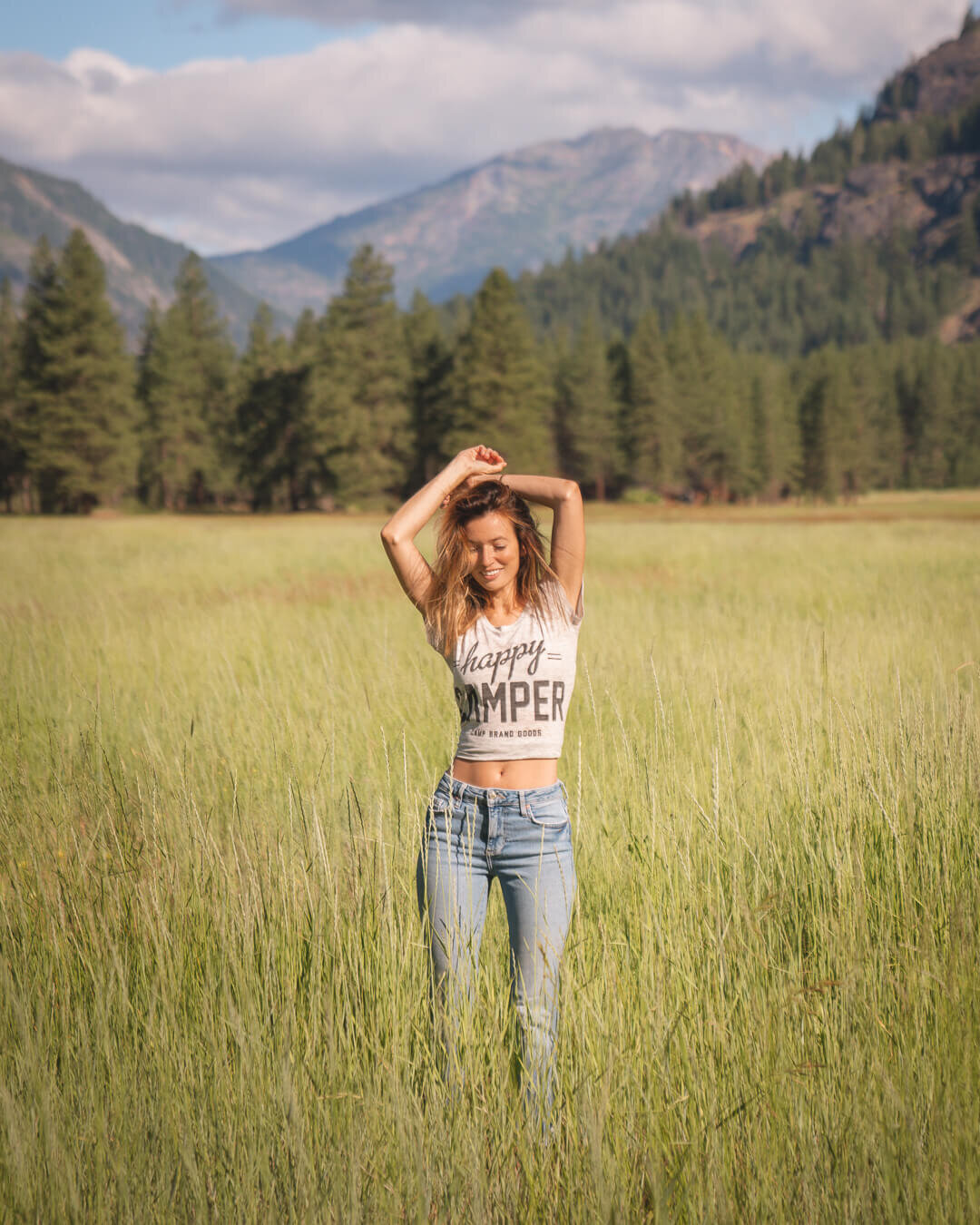
Happy camper.
What To Wear Car Camping
Comfort is key when dressing for a camping trip. Above all, choose durable but lightweight clothes that feel good on your skin, because you will probably expend some effort setting up camp.
When camping, it’s best to dress in layers. Cold weather or precipitation can be unpredictable. If you dress in layers, you can always strip off a layer if you get too hot. Fail to bring enough layers, however, and you could be miserable if a cold snap hits.
Layers might include thermal underwear or a base layer, a t-shirt, a sweater, a parka, and an outer coat. Make sure to bring heavy socks, gloves, and a stocking cap or balaclava if you expect cold weather. It’s better to have it and not need it, than to need it and not have it!
Think about hats and shoes as well. Sneakers may be fine for car campsites, but you will want to bring hiking boots if you expect to hit any of the nearby trails. Don’t bring your favorite fashion sneakers—even light camping trips tend to beat up shoes.
Camping Clothing Essentials
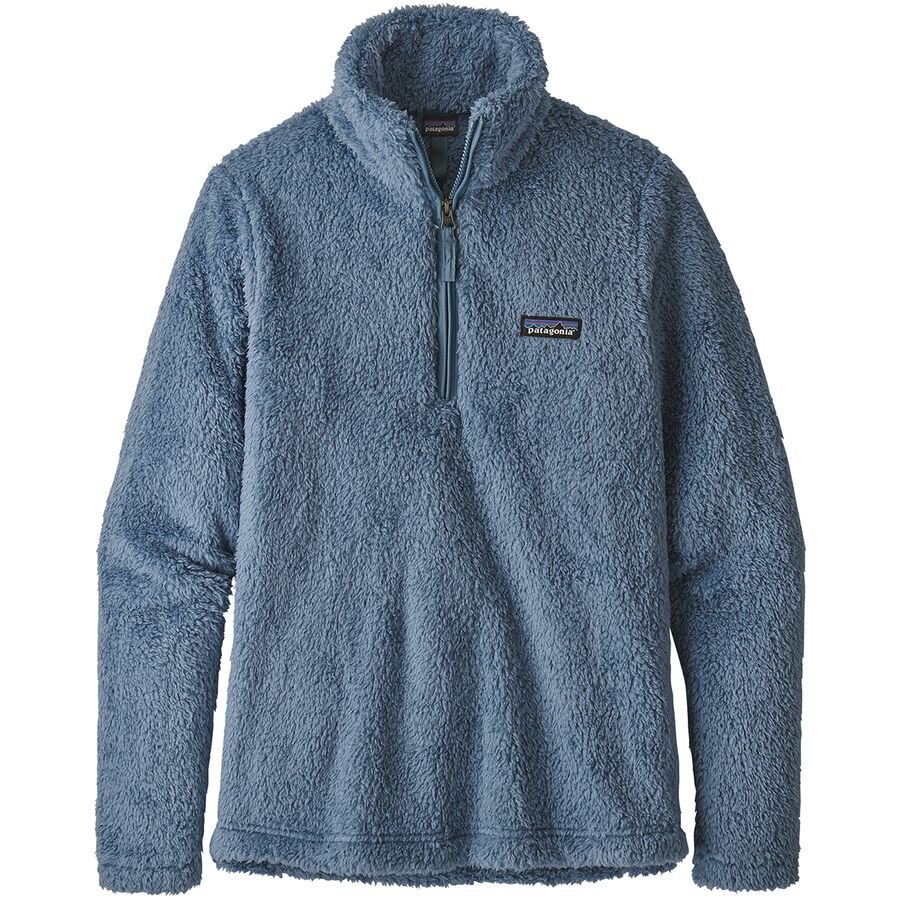
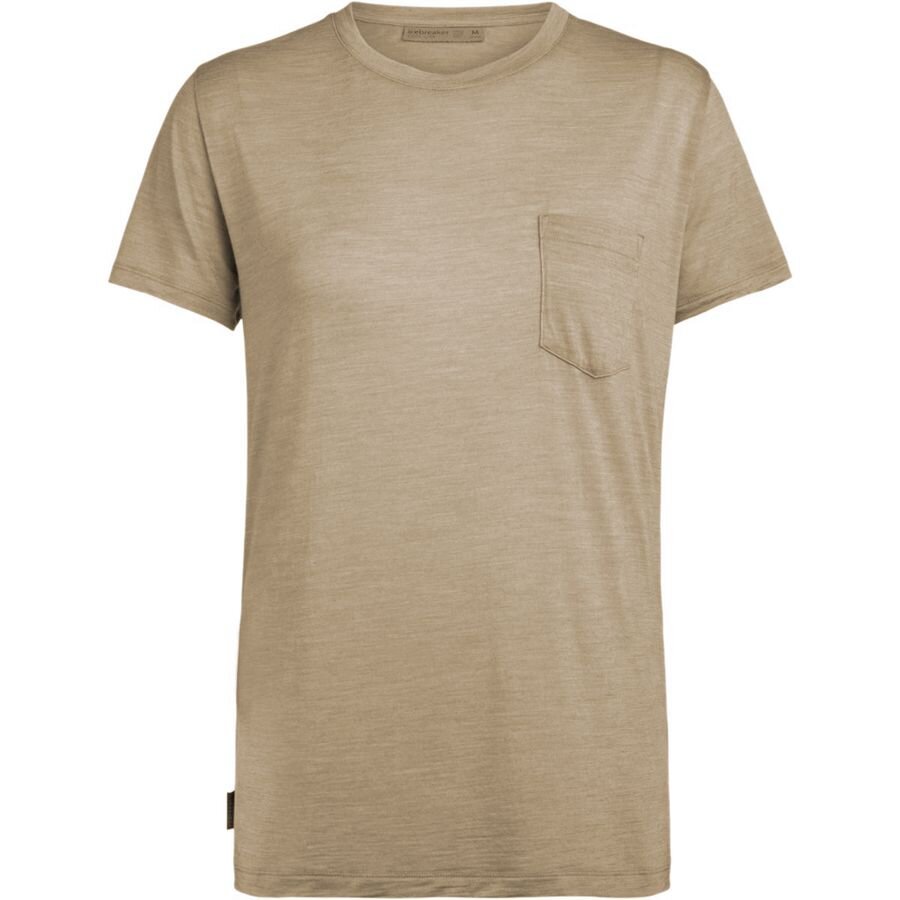

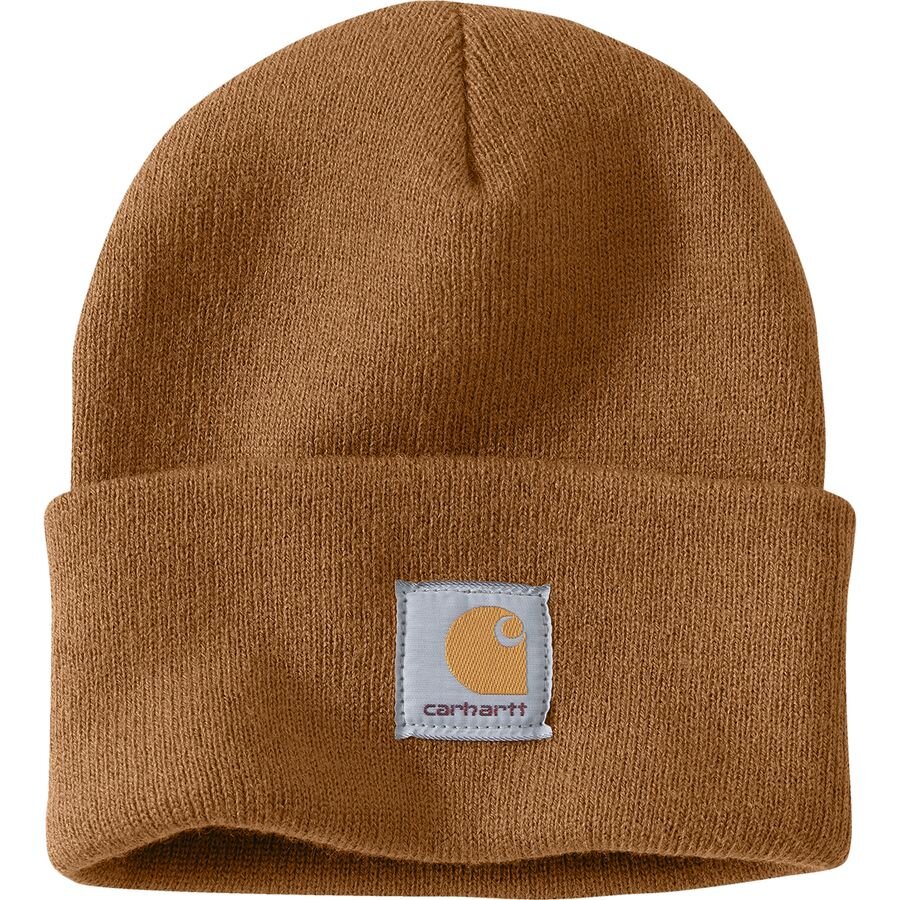
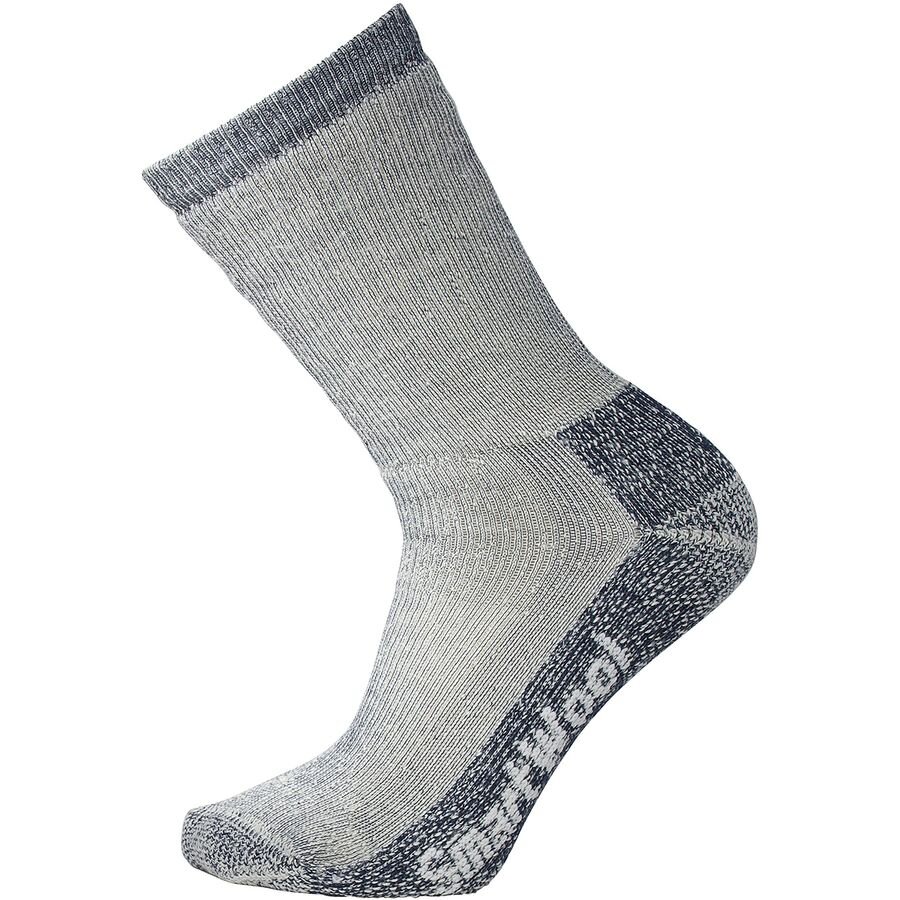
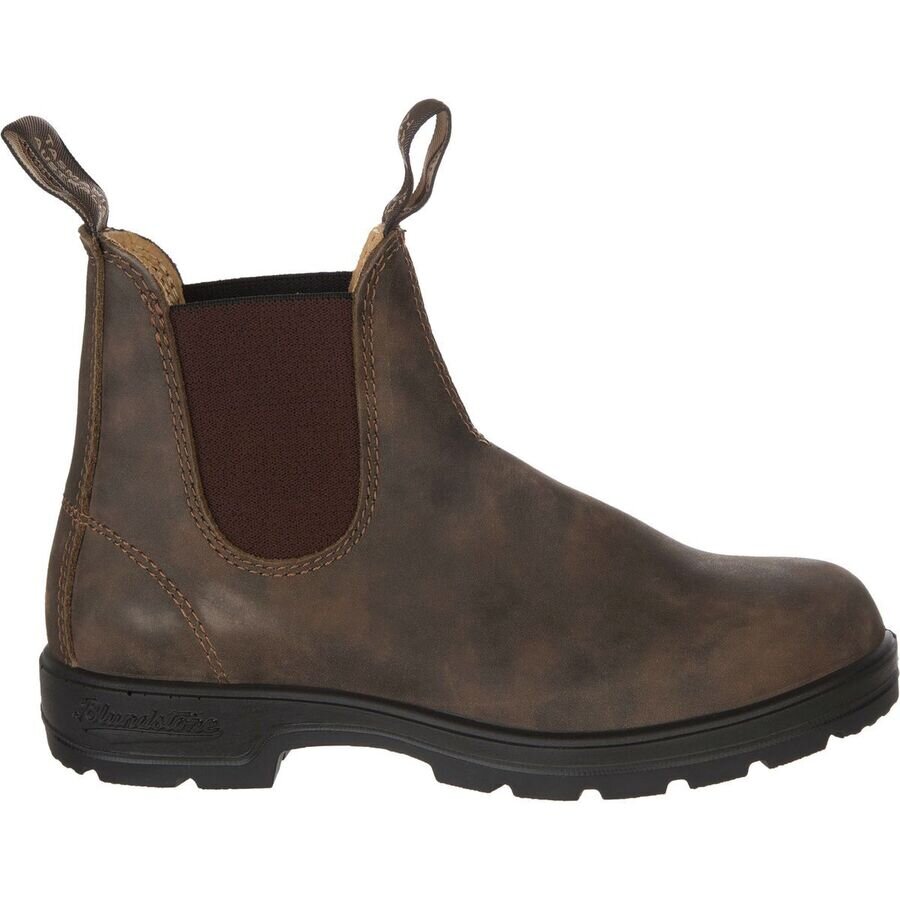
Hygiene Tips for Beginner Campers
When you leave “polite society” for the bliss of nature, hygiene can tend to take a back seat. Who needs to shower when the only people judging you are the squirrels and the birds?
Still, some baseline care for hygiene may be necessary to remain healthy… and to stay in the good graces of your fellow campers.
Bring the same basic camping gear you would bring on a normal vacation—deodorant, a toothbrush, toothpaste, etc. I like to also bring face wipes and dry shampoo if I’m going to be camping for a while and there is no water available at the site. There’s just something about having a fresh clean face that helps me sleep at night!
Going To The Bathroom While Camping
Let’s have a talk. When “nature calls,” we’re used to all kinds of comforts and amenities not found in nature. Your car camping campsites may have flush toilets, an outhouse, or port-a-potty. If there is a designated toilet at your established campground PLEASE USE IT! But if you are camping at an undeveloped site, there are a few things to consider when relieving yourself in nature, this is especially important for first-time campers to know.
When no outhouse or bathroom is present, digging a cathode is the most widely accepted method of backcountry human waste disposal. Here’s how it works:
1. Try to pee at least 200 feet from small bodies of water, like streams and ponds. The urine could seep through the soil and contaminate the ecosystem in the water.
However, at large bodies of water like lakes or rivers, the safest place to pee is actually in the body of water, where the volume will quickly dilute it.
So that’s Number One … What about Number Two? If you find yourself in deuce mode without a commode, make sure to pick a secluded spot at least 200 feet from any body of water. Feces can contaminate the ecosystem of any body of water. You should also be 200 feet from trails or campsites for obvious reasons.
2. Dig a hole at least 6-8 inches deep. Do your business directly into that hole, then bury it thoroughly. If the soil is moist, you can bury toilet paper with it. It will decompose in wet conditions. If the soil is dry, do not bury toilet paper. It will never decompose. Instead, bag any toilet paper in a sealed plastic bag and throw it away, or hike it away.
If all else fails, you can bag up your own poop in a sealed plastic bag and carry it out, like you do when you walk your dog. Make sure the bag is tightly sealed! Yes, it’s a little gross … but we didn’t go camping to be comfortable. We went to have a camping adventure! I recommend picking up a WAG bag just in case you find yourself in this situation.
What To Eat While You’re Car Camping
Backcountry camping usually requires a careful selection of lightweight, calorie-dense, nonperishable or freeze-dried meals that won’t spoil after days on the trail.
Car camping is much simpler. Load up the ice chest (make sure to bring enough ice!) and there’s no limit to the gourmet meals you can assemble. Just make sure your plans are suited to your collection of cooking utensils!
We tend to take for granted our favorite kitchen gadgets. A mandolin slicer makes short work of sliced tomatoes; a Swiss Army knife might be much slower going! And I can’t tell you how many times I’ve packed canned food only to realize I don’t have a can opener.
Leave No Trace Principles
“Leave No Trace” is a philosophy of camping that veteran campers take very seriously. It means exactly what it sounds like—when you leave the campsite, there should be little or no sign that you were ever there.
This principle of protecting fragile ecosystems is especially crucial in backcountry camping. Backpackers make painstaking preparations to bury biodegradable waste and hike out paper or plastic waste.
“Leave No Trace” camping is easier to accomplish when car camping. If the park or ranger service maintains trash cans, feel free to use them. You don’t have to pack out trash when the campsite has accommodations for garbage collection.
However, there are some nuances to “Leave No Trace” camping to keep in mind, even when car camping. Here are my first time camper tips for leaving no trace:
Camp on durable surfaces. Don’t pitch your tent on soft soil vulnerable to erosion.
Leave what you find. Don’t take souvenirs from nature. The mantra is “take only pictures, leave only footprints.”
Be careful with campfires. Only use designated fire pits and keep the size of the fire under control. Do not get cute with this. Forest fires can have unspeakable consequences. Extinguish fires by dousing them with water until the ashes are cool to the touch, everywhere in the fire pit.
Respect wildlife. This is for your safety and the animals. Don’t feed or try to interact with wild animals.
Respect other visitors. Be a good neighbor, not too noisy or distracting. Remember, many people camp for peace, not a party.
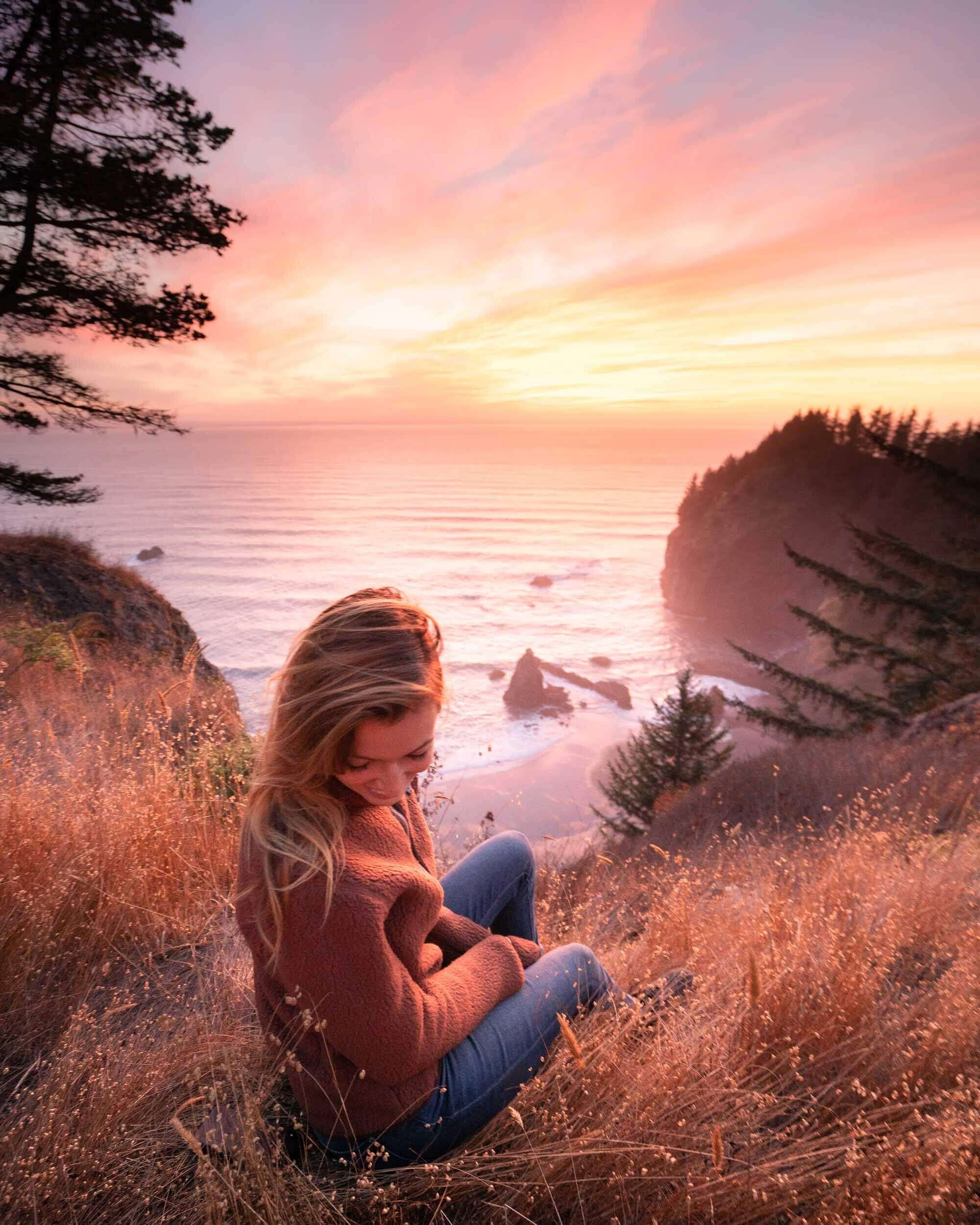
There’s much more to say about going camping, especially backcountry camping, but that’s enough to get you started! If the idea of camping has always seemed a bit daunting to you, I hope this gives you a good place to start! Questions? Did I miss anything? Leave a comment, and I’ll see you on the trail!
Please note that this blog post includes affiliate links. If you do choose to purchase something, I may earn a small commission – at no additional cost to you. As always, all ideas and opinions expressed in this post are entirely my own.
Thank you so much for your support! Happy Adventuring. – jess
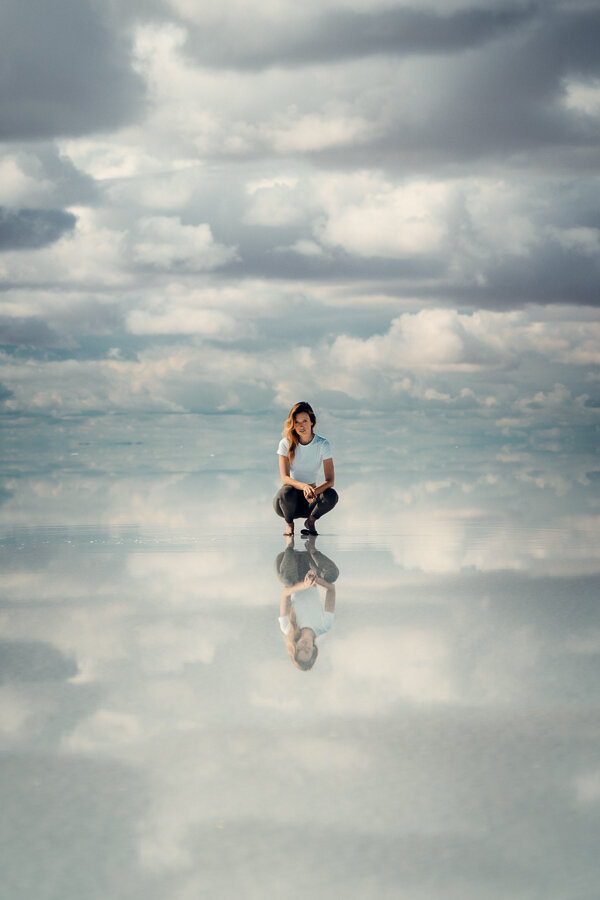
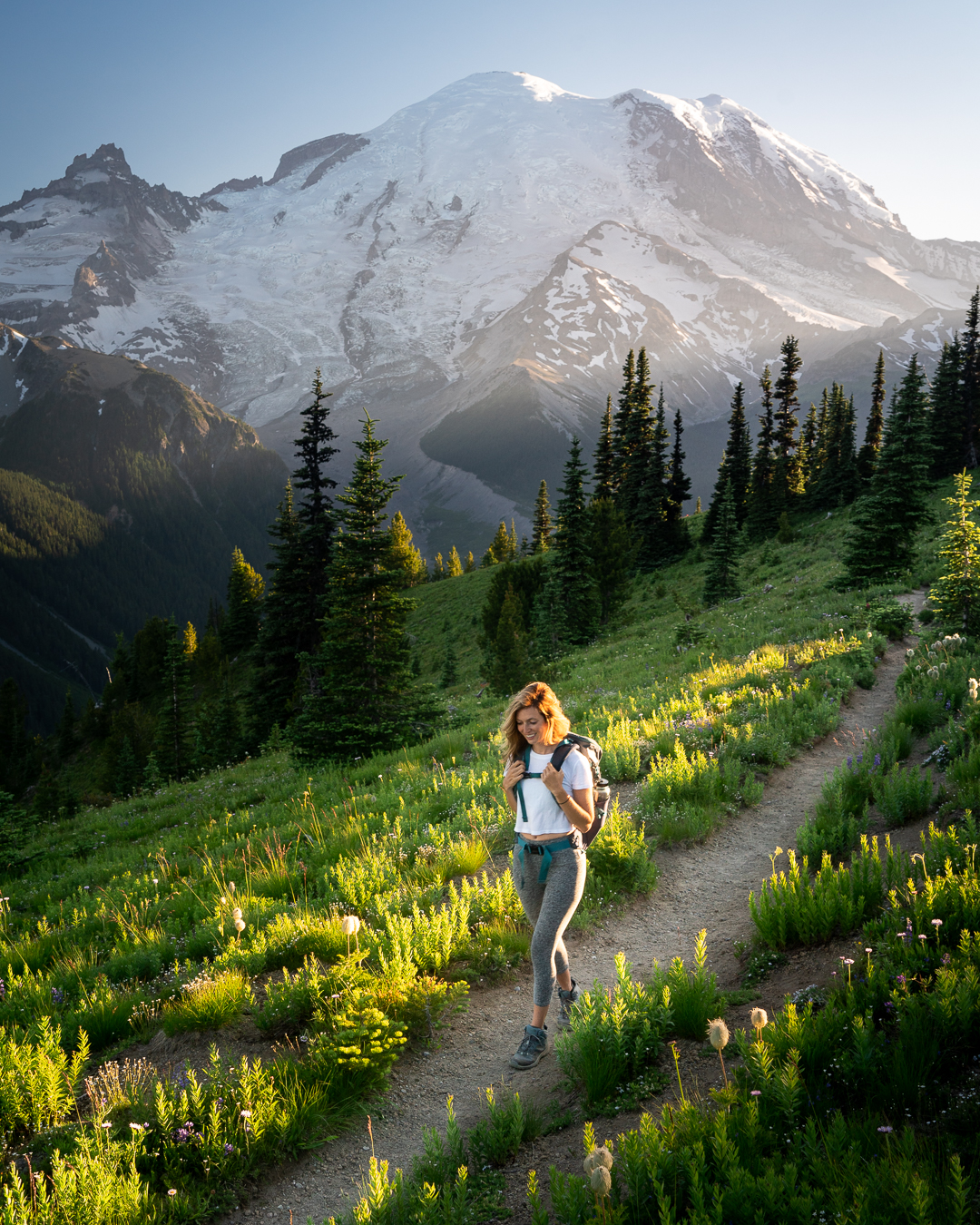
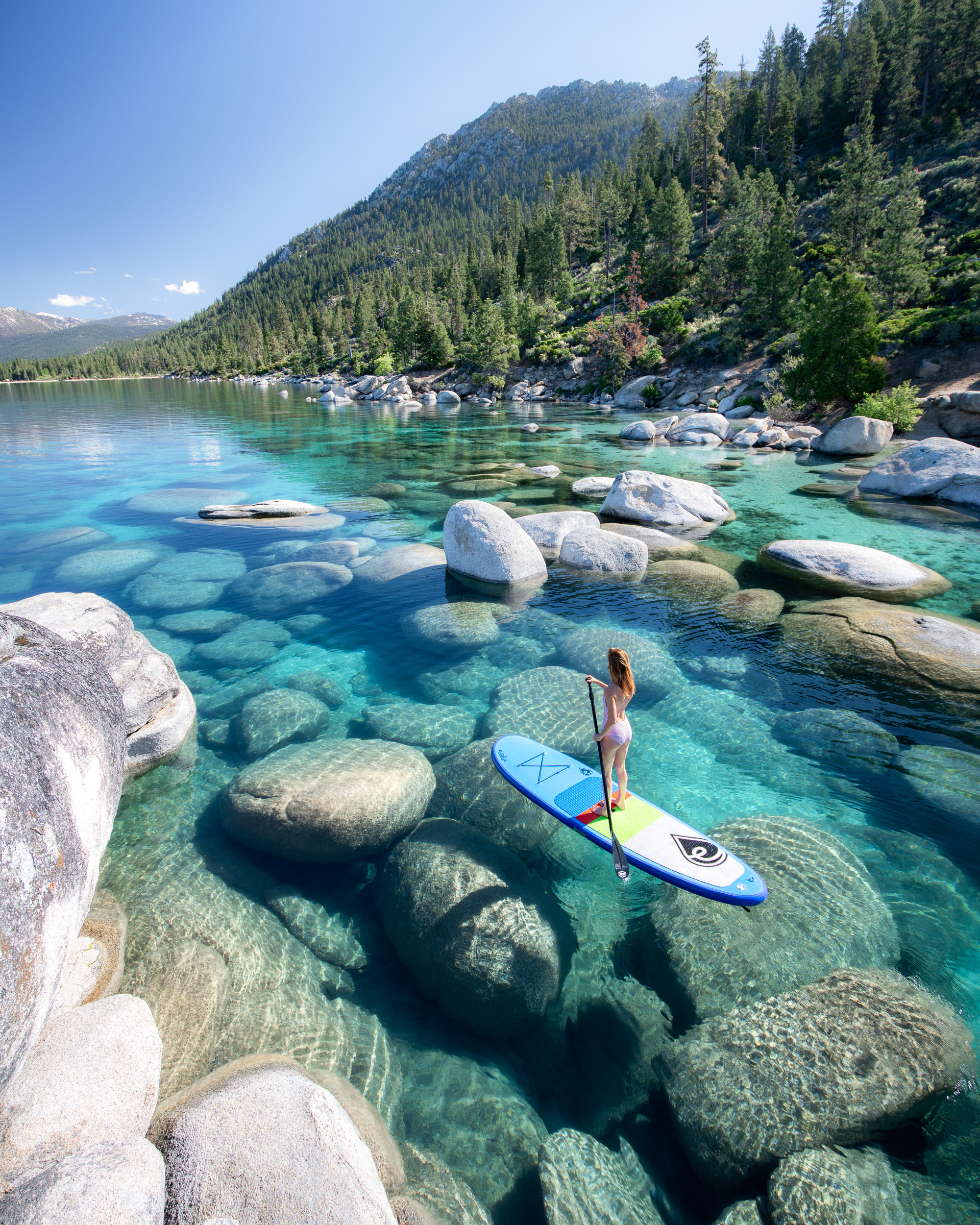
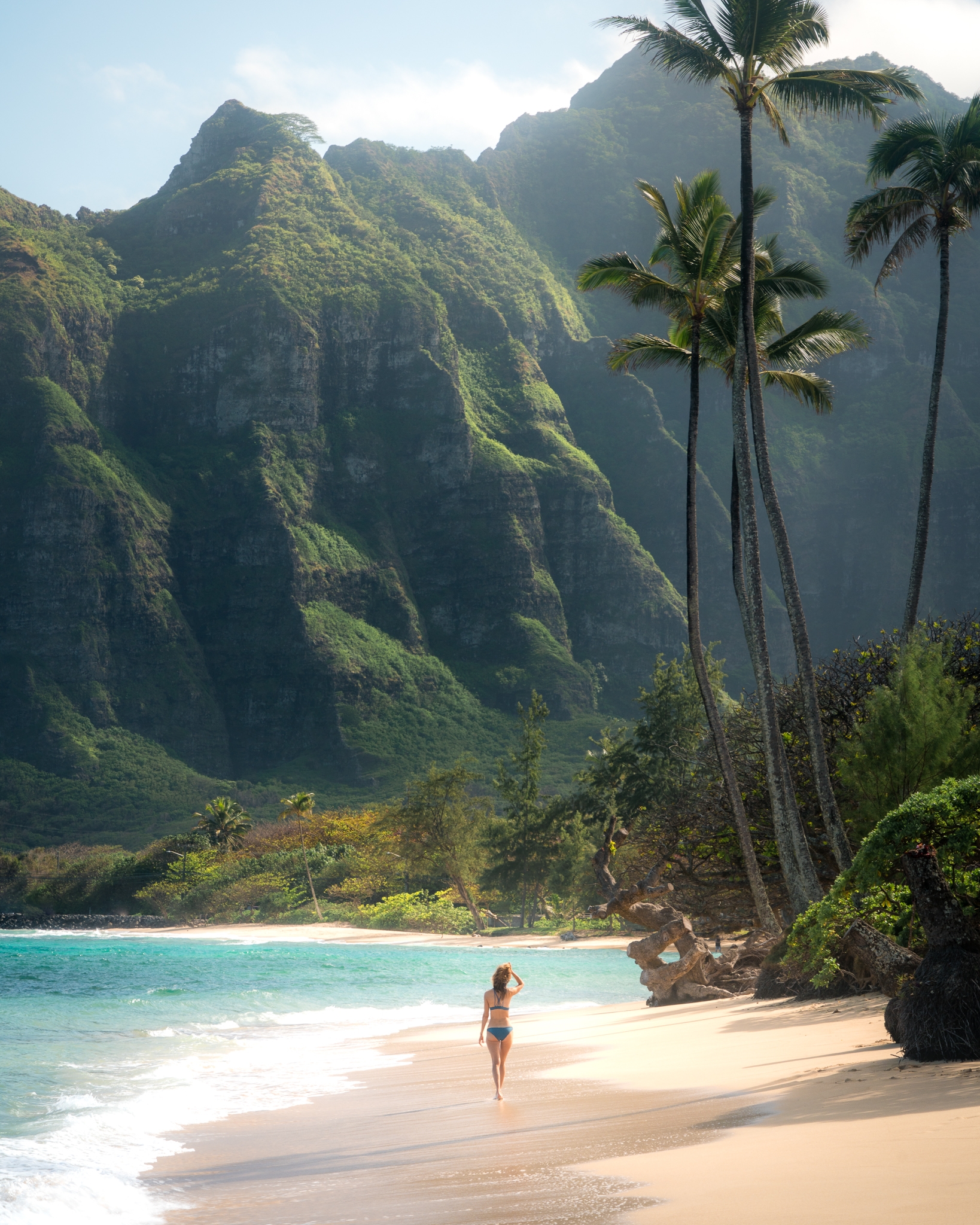
This was such an informative fun blog to read. With the COVID-19 situation outdoor activities are so important and much safer than being cooped up indoors. The photos of your little nephews were
Thank you so much! I hope you get to spend lots of time outdoors this summer. 🙂
What a fun read; practical and comprehensive! I really love the Pro Tips. Thank you for sharing, Jess! Hope you’re staying safe in these uncertain times.
Thanks Kirtan! Camping has always been such a happy activity for me, I’m hoping this post can make it a little more approachable for someone else out there. I hope you’re staying safe too. 🙂
Ah Jess I love this.
And especially that you distinguished between car camping/frontcountry camping and backcountry camping! I feel like I always forget about car camping and just lump it into road trips! Always love reading your guides! Thanks for sharing.
-Andrea
Thanks Andrea! I forget about car camping a lot too, especially now that Quin and I do some much traveling in the van. But it’s such a great way for beginners to get a little bit more experience with their gear before heading into the backcountry. 🙂
I really love reading this its so fun you have put a lot of effort into it Jess.
Thank you for sharing.
-Alvin
Thanks so much Alvin! Seriously means the world to me. 🙂
Love this guide! As a bit of feedback (which won’t impact many of your readers), Backcountry doesn’t let you see the links if you try to access in Europe so we can’t see what you’re recommending (vs REI which does and also lets you ship to Europe). Very pesky of Backcountry and only a problem for us non-US folks.
My next US trip will involve some camping in the Smoky Mountains so I will be sure to use some of your tips (thinking of trying Annie’s Mac & Cheese for it!).
Agree! It is a very frustrating aspect of Backcountry. Apparently it has to do with Europes privacy laws. . . but then I don’t know why REI links work. Anyway, now that I’m aware of this issue I will certainly try and be better at including the name of the product for anyone who can’t see the links.
I have never been camping, but it’s something I definitely want to start doing regularly in the future. Problem is, I have zero experience and zero knowledge. Luckily, I get to bump to this article. Thanks!
I hope you get to try it out soon! It’s finally almost camping season again. Happy camping! 🙂